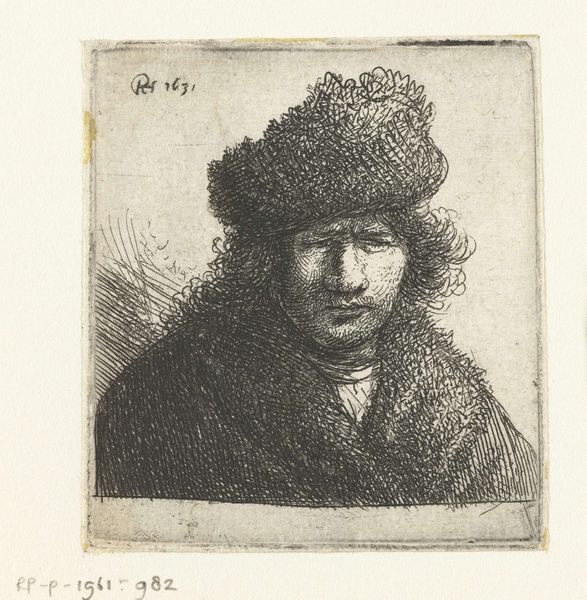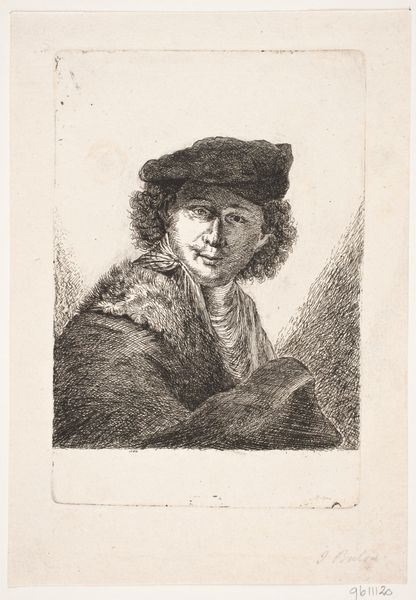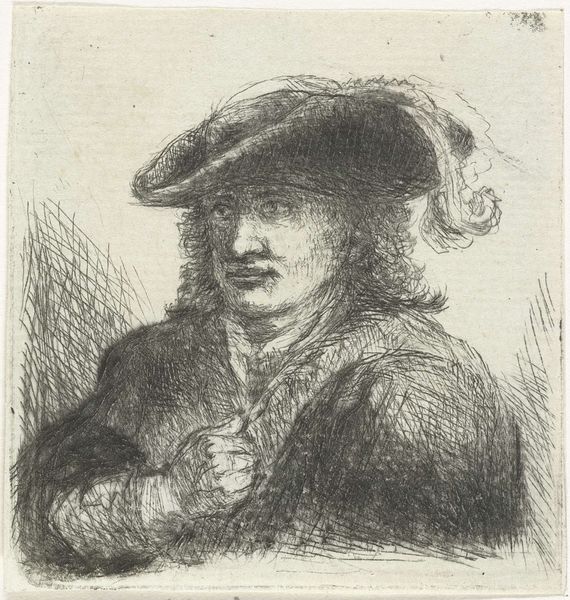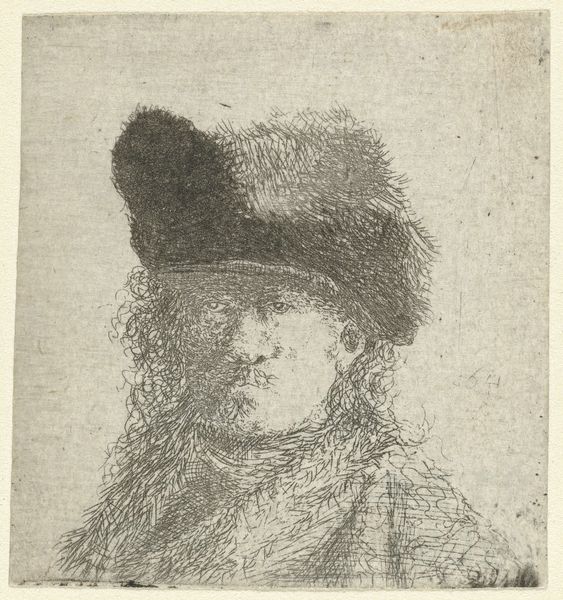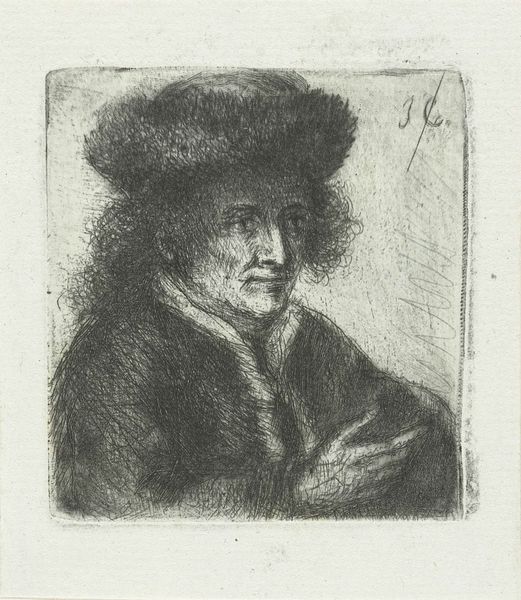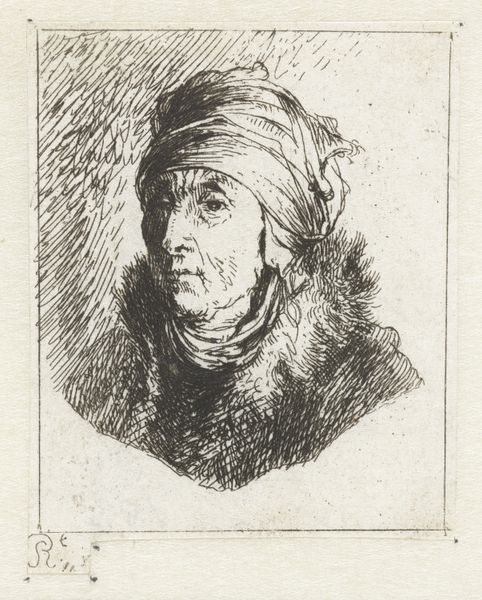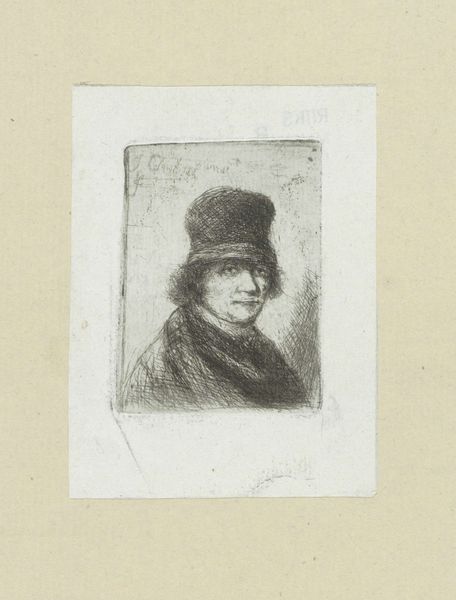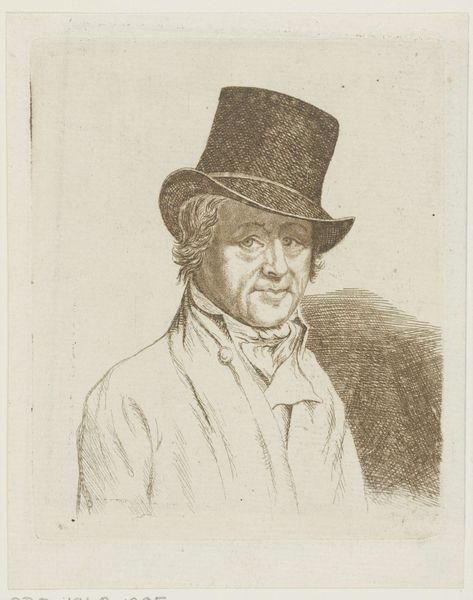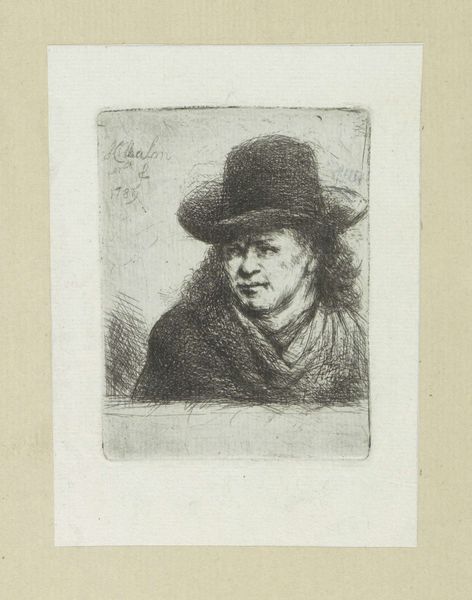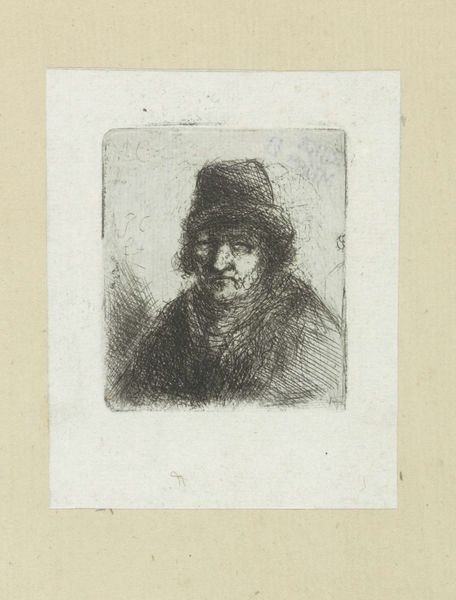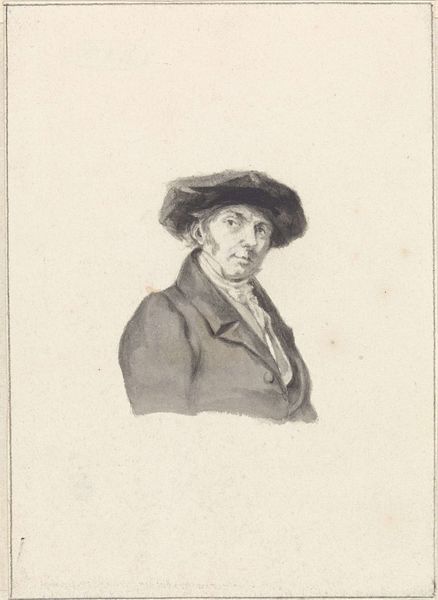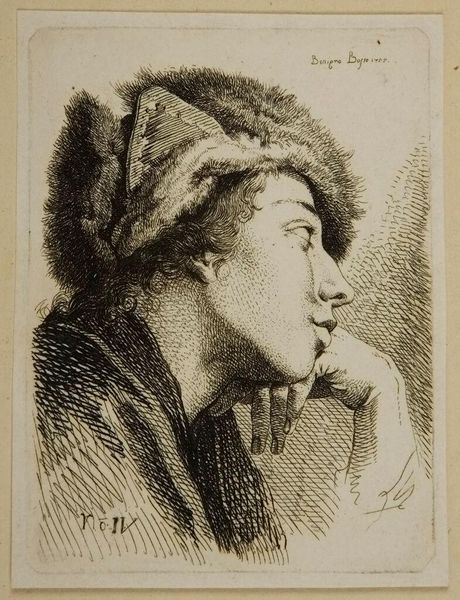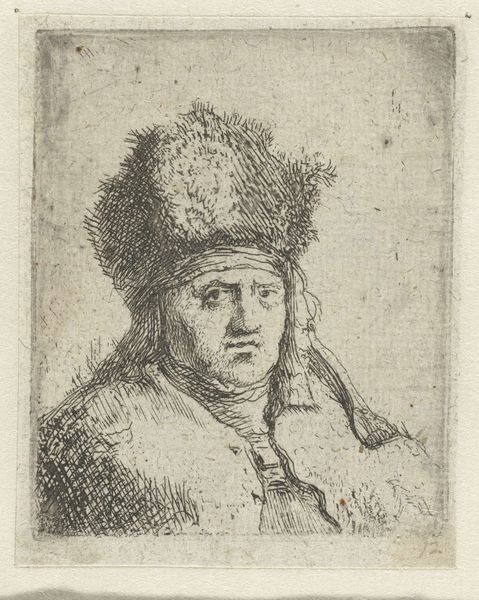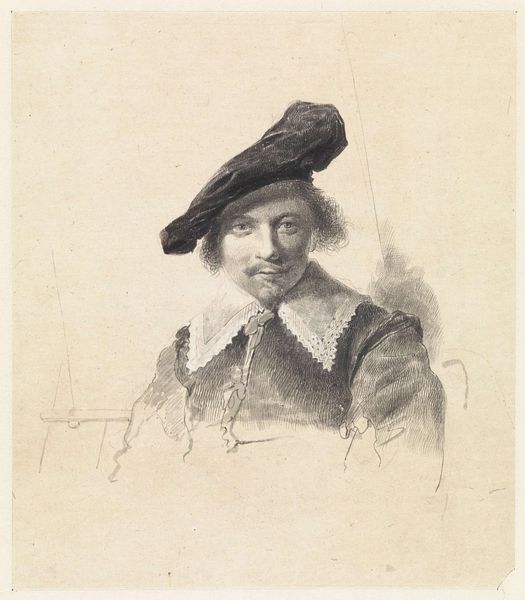
print, etching
#
portrait
#
self-portrait
#
baroque
#
dutch-golden-age
# print
#
etching
Dimensions: height 80 mm, width 73 mm
Copyright: Rijks Museum: Open Domain
Editor: This is Cornelis Danckerts' "Self-portrait in a slant fur cap: bust," made sometime between 1630 and 1656. It’s a print, an etching to be exact, currently residing in the Rijksmuseum. The detail is remarkable for such a small work. What jumps out at you about this piece? Curator: What I immediately see is the tangible link to production: the etching process itself. Look closely at the lines, the varying densities and directions. These choices were driven by the artist’s engagement with the copper plate, the acid, the very physical labor of mark-making. Consider also the fur cap. Editor: Yes, the fur cap really grounds the piece! Curator: Exactly. Where did that fur come from? Who processed it? Who traded it? Etchings like this became increasingly accessible; consider them in relation to broader systems of production and consumption. This was a commodity made with a particular intention and labor. What can we interpret from that perspective? Editor: I guess seeing it this way takes away some of the…romanticism? Curator: Precisely! It challenges this notion of the artist as purely divinely inspired, separate from society. This work exists as part of larger material and economic networks of the Dutch Golden Age, particularly as the demand for such images rose and trade in luxury goods increased. Editor: I never thought about the origin of the fur, or even the copper, before! Viewing the artwork as a result of all those different processes does open up some new interpretations. Curator: It allows us to analyze not just aesthetic choices but the social relations embedded in the making of the artwork. That perspective enhances our understanding of the Golden Age itself. Editor: Thanks for sharing; now I have many new details to consider in my next essay!
Comments
No comments
Be the first to comment and join the conversation on the ultimate creative platform.
